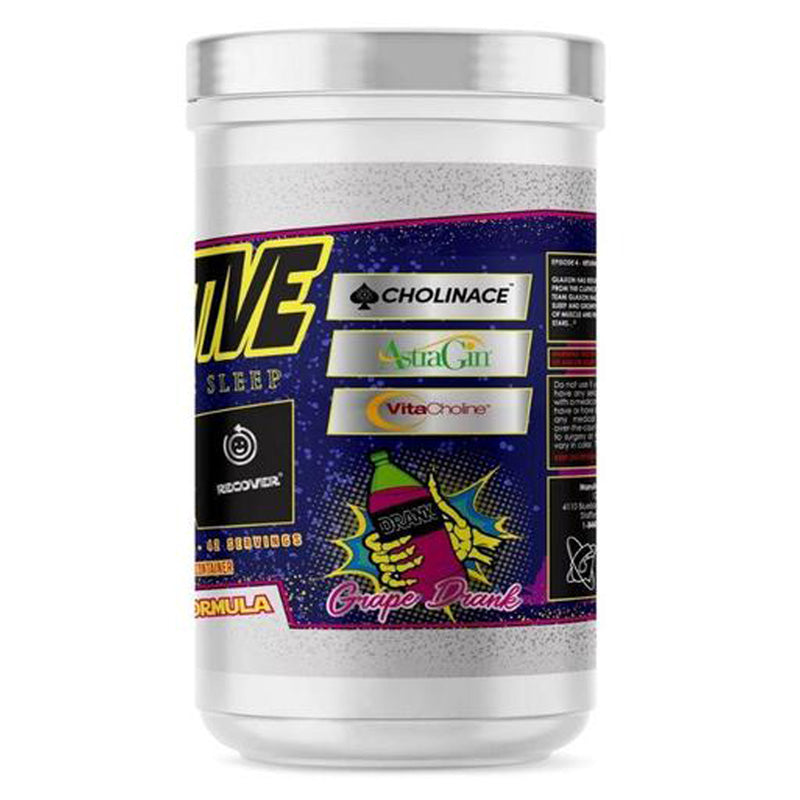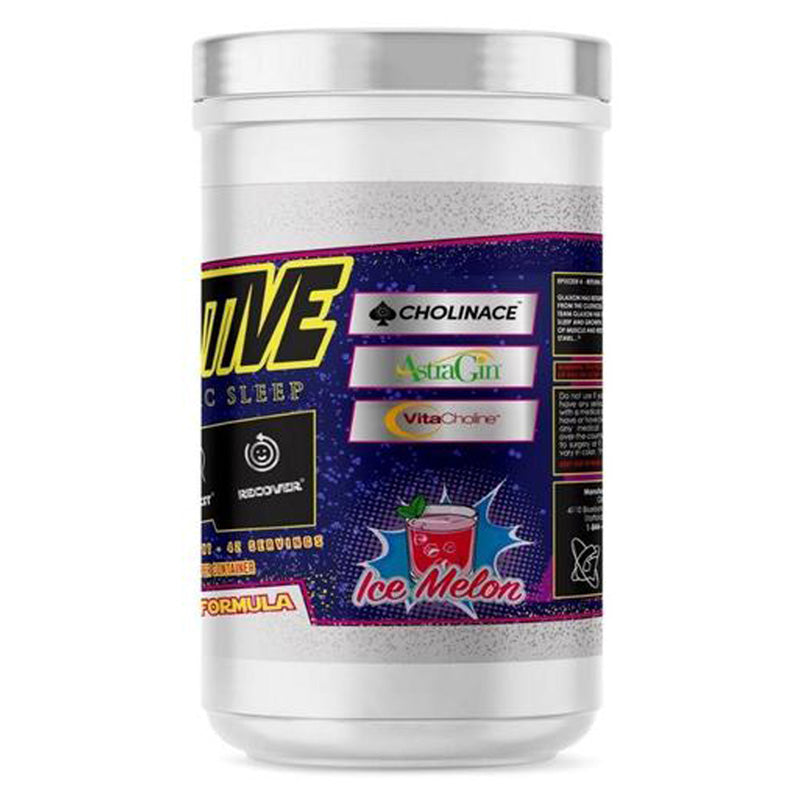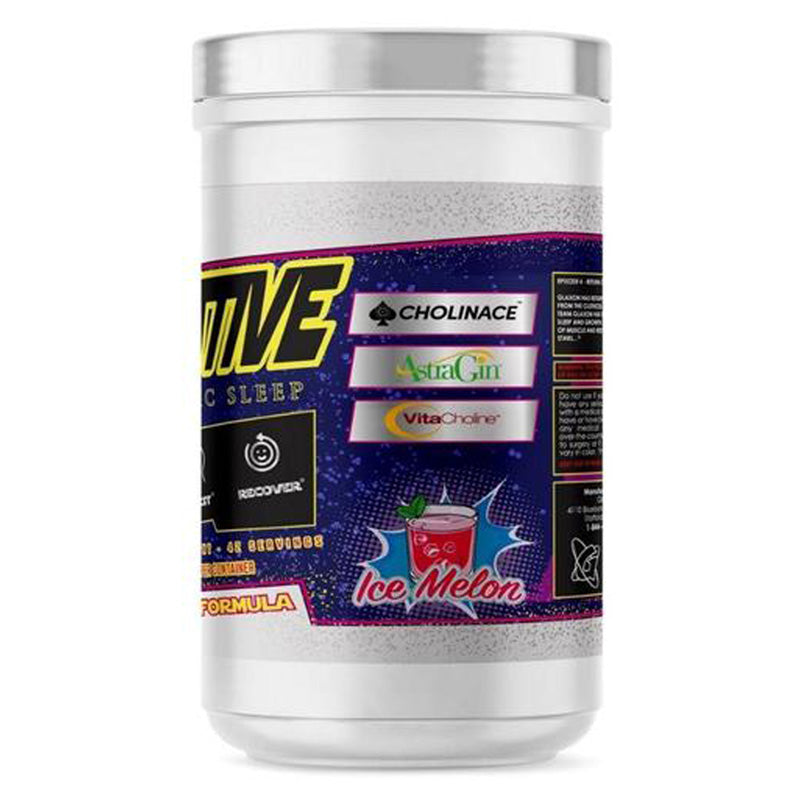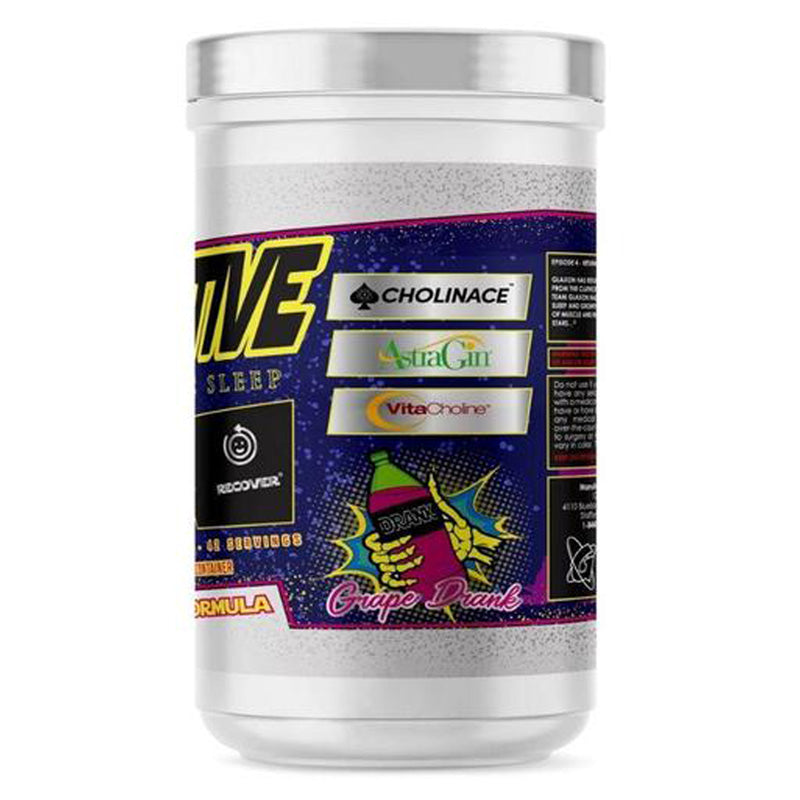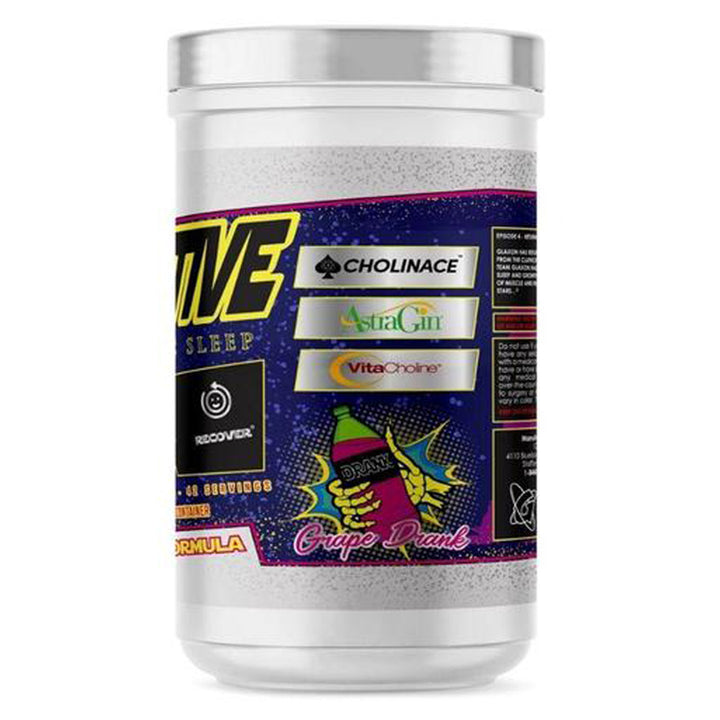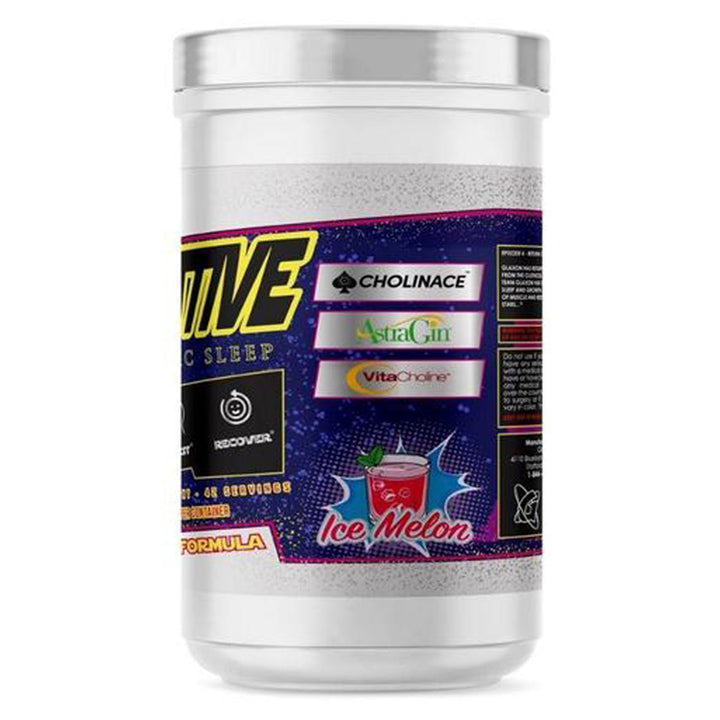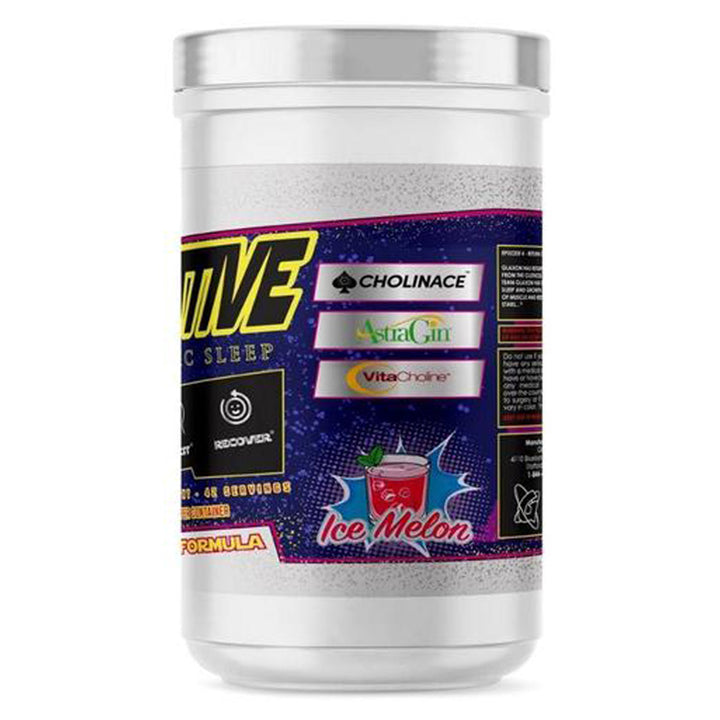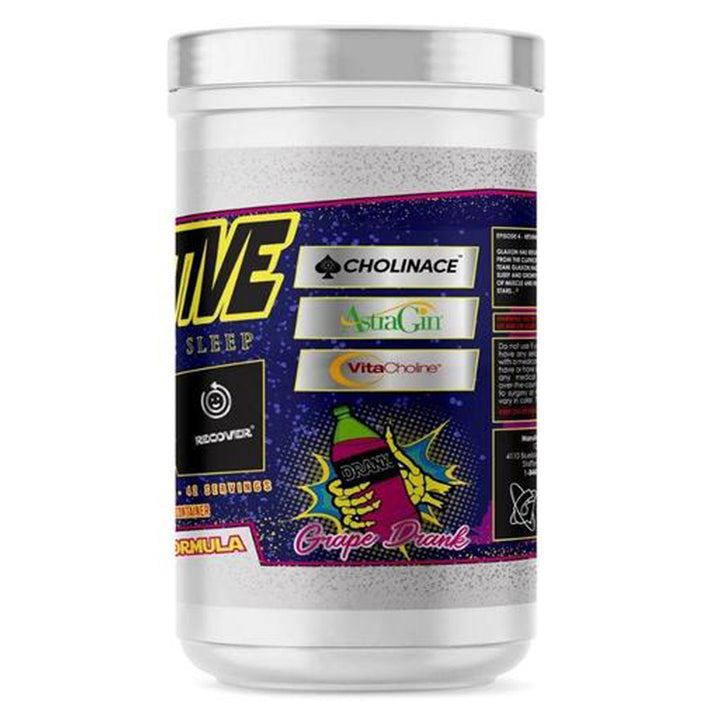Glaxon SEDATIVE


- In stock, ready to ship
- Backordered, shipping soon
Pickup currently unavailable at GET YOK'D - BURBANK
Pickup currently unavailable
236 North Glenoaks Boulevard
Burbank CA 91502
United States
+17474771477
Pickup currently unavailable
3218 Galleria Way
Glendale CA 91210
United States
+18186385260
Pickup currently unavailable
1106 East Colorado St.
Glendale CA 91205
United States
+18185880095
Pickup currently unavailable
5122 Lankershim Boulevard
Los Angeles CA 91601
United States
+18188537995
Pickup currently unavailable
1106 East Colorado Boulevard
Pasadena CA 91106
United States
+16267147404
Sedative is the perfect end-of-day formula designed to help promote rest, relaxation, and recovery. Sedative is a fine mix of inhibitory amino acids, growth hormone secretagogues, and anxiolytic components combined to elicit a blissful nose-dive right into bed.
WHY WOULD I TAKE IT?
Ever feel like your pre-workout is lasting a little too long from your evening workout? Maybe if you had something to take the edge off, you could actually get to sleep on time. This is where Sedative does the most work, by being designed to bring those energy levels back down so you can get the right amount of sleep you need to properly recover.
HOW DOES THIS WORK?
Sedative works mostly by providing the “inhibitory” (as opposed to excitatory) neurotransmitters Glycine, GABA, and somewhat Serotonin. Some of these amino acids and extracts have a “secretagogue” effect in that they can elicit the release of growth hormone from the pituitary. Additionally, Sedative provides other components like Theanine and Melatonin to reduce stress and promote sleep.
HOW MUCH SHOULD I TAKE?
Simply dissolve ½ to 1 full scoop of Sedative into 16oz (500mL) into water and mix vigorously. Consume 90 minutes prior to desired effect or before bedtime. To assess tolerance, start with ½ scoop, and if well-tolerated, up to 1 scoop can be taken every 24 hours.
Methods Behind the Madness: Sedative by Glaxon
When trying to get a restful night’s sleep, what is it that you’re really missing that keeps you from dozing off? Did you take your pre-workout too late in the day? Do the stressors of daily life have a million thoughts running through your head in anticipation of tomorrow? Sedative is Glaxon’s “End of Day” formula that is designed to soothe, relax, and de-stress the body so it can recover the best way it knows how - sleeping.
Amino acids as Neurotransmitter & Neurohormone Modulators
Initially we sought out the main inhibitory amino acids that can act as neurotransmitters to help promote relaxation and a calm state of being. This begins with two specific inhibitory amino acid neurotransmitters: L-Glycine and GABA (Gamma-Aminobutyric Acid). L-Glycine is actually the simplest of all amino acids, it’s sweet tasting and only has a single hydrogen atom in its side chain. The main functions of Glycine occur in the retina, spinal cord, and brainstem where Glycine activates its receptor - causing a subsequent influx of chloride into neurons - and this causes what is known as “inhibitory postsynaptic potential” making neurons slow down and less likely to fire. There have been several studies that have analyzed L-Glycine supplementation in humans and have shown statistically significant improvements in “feelings of fatigue”1, increases in Glycine concentrations in the Central Nervous System2, and decreasing daytime sleepiness with improvements in performance of memory recognition tasks3.
However, L-Glycine isn’t the main inhibitory neurotransmitter in the body - that role belongs to Gamma-Aminobutyric Acid or GABA. GABA is the principal inhibitory (vs. excitatory) neurotransmitter and it is estimated that at least 20% of all brain neurons are “GABAergic”4. Like the L-Glycine receptor, the GABAA receptor regulates the flux of Chloride (Cl-) ions across neuronal membranes. Now, there are several different subtypes of GABA receptors - some of which control the flow of other ions such as Calcium or Potassium, which also regulate membrane potential. Interestingly, GABA has varied attractions to each of its own receptors with the highest binding affinity actually for GABAC, which also has the longest binding duration and effect of any of the other GABA receptor subtypes5. In most cases of GABA receptor activation, deeper slow-wave sleep is enhanced6. Due to the high affinity of GABA to GABAC receptors, this leaves more possibilities for co-activations of other forms to be taken in conjunction with GABA supplementation.
A potential GABA-synergy with another amino acid, L-Theanine was studied in 2019. This combination of GABA and L-Theanine showed statistically significant effects over controls, but also over either amino acid administered individually. There was significant increases in REM sleep, and non-REM sleep, sleep duration, and a significant decrease in sleep latency7. L-Theanine appears to be another interesting amino acid. Though it isn’t part of the traditional 20 proteogenic amino acids, L-Theanine is most commonly obtained in the diet through supplementation or ingestion of white tea. L-Theanine is reported to cross the blood-brain barrier and influence the secretion and function of neurotransmitters in the CNS at approximately 30-minutes after oral administration8, and reaches peak concentration at 5-hours post-administration before its effects begin to diminish9. Perhaps what is most interesting about L-Theanine is the range of receptors that it is capable of modulating, since there’s no endogenous receptor for L-Theanine itself. Because of this, L-Theanine acts on AMPA, Kainate, and NMDA receptors of the brain10. Since these receptor types are most commonly stimulated by glutamate (an excitatory amino acid neurotransmitter) they’re most prone to excitatory responses. L-Theanine actually has an antagonistic relationship with these receptors, this results in inhibition instead of excitation - and this decreases perceptual stress levels11. Additionally, L-Theanine has been studied for its effects on anxiety in comparison to alprazolam (Xanax). What was interesting about this study is that the comparative drug, alprazolam, had no anxiety dampening effects at rest or when faced with an anticipatory anxiety (inevitable electric shock) however, L-Theanine did have more significant relaxing effects under resting conditions12.
Another key amino acid found in Sedative is L-DOPA from extracted Mucuna pruriens or Velvet Bean. What’s interesting about this amino acid is that it does cross the blood brain barrier and is the most common precursor to the neurotransmitter, dopamine. Coincidentally, Sedative also contains the amino acid precursor to serotonin in the form of 5-Hydroxytryptophan. However, once L-DOPA is converted into dopamine - this can also yield substantial amounts of adrenaline and norepinephrine as well. L-DOPA happens to also have another peculiar mechanism that hasn’t been fully elucidated - the subsequent release of Growth Hormone-Releasing Hormone from the hypothalamus13. Though many studies have tried uncovering this mechanism behind L-DOPA’s stimulative effect of growth hormone levels, perhaps the one that is most plausible is that L-DOPA provides precursors to dopamine, which in turn can become norepinephrine and stimulate alpha-adrenoreceptors - which could then stimulate a release of growth hormone14.
Botanicals that Sedate
Next in Sedative are an interesting pair of herbal extracts that help further magnify the effects of this “end of day” formula. The common Magnolia tree (Magnolia officinalis) contains two compounds worthy of note: Magnolol & Honokiol. These two compounds are actually isomers of one another, but are commonly referred to collectively. Magnolol and honokiol can cross the blood-brain barrier15, can act as muscle relaxants16, and can diminish the release of histamine17 & leukotrienes18. Needless to say that all of these features are desirable for a relaxation formula, but Mangolol and Honokiol form some other helpful synergies in Sedative. First, it has an additive effect with L-Theanine being an antagonist of NMDA and metabotropic Glutamate receptors that have an inhibitory effect on the CNS19. Secondly, it has another potential additive effect when co-administered with GABA - where GABA predominates the GABAC receptors, while Magnolol & Honokiol occupy GABAA receptors20.
The second herbal extract that is most prominent in Sedative comes from Corydalis yanhusuo which is extracted for L-Tetrahydropalmitine (L-THP), which has been shown to have some anxiolytic (anxiety-reducing) activity21. It is interesting though, in how L-THP executes this task. Though it was previously thought that L-THP modulated GABA receptors, similarly to Magnolol & Honokiol, a study published in 2019 unveiled a different mechanism. It is through interactions with dopamine receptors that the “hypnotic” quality of L-THP is accomplished, but through mixed types of activity. The hypnotic effect of L-THP is through agonism (or promotion) of Dopamine-1 receptors - combined with antagonism (or diminished activation) of Dopamine-2 receptors22.
A Crucial Mineral & The Hormone of Darkness
It has been proposed that subclinical magnesium deficiency can exacerbate conditions that result in chronic inflammatory stress23. Some studies have suggested a relationship between blood magnesium and the amount of sleep, with an increased slow-wave sleep (deep sleep) and decrease paradoxical sleep (REM sleep) when serum magnesium is high24. Not only does magnesium deficiency alter sleep and inflammatory status, but can also result in cognitive defects during waking hours. A potential mechanism that has been suggested highlight magnesium’s role as being an NMDA receptor antagonist and GABA receptor agonist, thus resulting in decreased excitation of neurons25,26. Several other studies have also asserted that higher brain and blood magnesium levels are associated with a more consolidated and less fragmented sleep in both human and animal models, confirming that magnesium plays a role in modulating sleep quality27,28.
In the duality of day vs. night, there are two hormones that that claim dominion over these portions of our experience. The day is marked by exposure to the sun, and thus facilitates the conversion of cholesterol into Vitamin D (Cholecalciferol) which plays a vital role in calcium metabolism and bone integrity. However, when the sun goes down and our eyes no longer perceive light, Melatonin - the hormone of darkness takes over. The retina itself, gets triggered by a lack of photons from the surrounding environment, which sends a signal to what’s called the suprachiasmatic nucleus, which then transmits a signal for the pineal gland to start its daily dump of melatonin into the central nervous system. Melatonin’s synthesis and release are stimulated by darkness and inhibited by light. Typically, melatonin secretion increases soon after the onset of darkness, peaks in the middle of the night (2-4 AM), and then gradually falls during the second half of the night29. However, even the administration of melatonin from an exogenous (outside the body) source affects sleep propensity (how fast you fall asleep), as well as the duration and quality of sleep, and has hypnotic effects30. In summary, there’s evidence to support the fact that melatonin has a hypnotic effect in humans. It’s peak serum concentrations coincide with sleep. Its administration in doses that raise the serum concentrations to levels that normally occur nocturnally can promote and sustain sleep. Higher doses also promote sleep, possibly by causing relative hypothermia. Exogenous melatonin can also influence circadian rhythms, thereby altering the timing of fatigue and sleep29.
Acetylcholine, Consciousness, and Dreaming
Acetylcholine actually has many jobs inside the body. During waking hours, its primary responsibility is being the neurotransmitter of neuro-muscular control (ie. the mind-muscle connection) and is essential for controlling selective attention. There are also many other theories as to the role of Acetylcholine that include the possibility that it affects discriminatory processes; increases signal-noise ratios; modulate the efficiency of cortical processing of sensory information; controls the reception and evaluation of stimuli for their level of significance; modifies cortical responsiveness in terms of the relevance and novelty; and confines the contents of the conscious stream31.
An interesting, nocturnal, responsibility of Acetylcholine is correlated with dreaming and subconscious memory consolidation. One of the most important neurophysiological events that triggers REM sleep and/or dreaming is the firing of cholinergic neurons and to compound this, administration of an Acetylcholinesterase inhibitor (such as Huperzine A or Galantamine) actually decreases REM-sleep latency (how fast your start dreaming) and increases REM-sleep duration (how long your dreams are). It is also true that Acetylcholine levels are highest during waking and while dreaming, yet are significantly lower during non-dreaming sleep. It is also strikingly coincidental, that the discovery of Acetylcholine by Otto Loewi was the result of a dream.
However, there are cases where REM-sleep can occur without dreaming and that dreams can also occur without REM-sleep which lead to the conclusion that dopamine may play a significant role in the actual dream-state itself. In fact, if you consider that ~75% of total sleep time is actually non-REM sleep, it would imply that roughly 25% of REM-like dreams actually occur outside of normal REM sleep.
The real question is, why? What is the brain doing at night where it needs to be so active and vivid to our subconscious minds? And why is dreaming an important facet in the development of memories? There’s a compelling hypothesis that seems to be at the crux of these paradoxical concepts: dreaming & memory. It’s interesting to consider that while sleeping, sensory input from our external environment is at a minimum, yet the mind continues to process information, using memory fragments to create images, thoughts and narratives. Though some might consider dreams to be a meaningless distraction, spontaneous cognition during states of sleep and resting wakefulness appear to serve important functions related to processing past memories and planning for future events33. There are several studies now that show sleep can enhance novel learning experiences and recall34. This offline reactivation of newly acquired information is thought to play a role in stabilizing labile memory traces into a more permanent form of long-term storage, while integrating new experiences into existing cortical knowledge structures (‘memory consolidation’).
Another perplexing thing about dreams is that neural activity is not reactivated exactly in its original form. Waking firing sequences are reactivated in intermittent bursts, on a faster timescale than the original experience35. And rarely is a waking firing sequence reiterated exactly - although reactivated sequences statistically resemble waking activity, the “replay” is not always precise or in its original form, but instead remixes fragments of recent experiences with other content in a sense-making effort to reconcile new information with previously acquired information36. In support of the dreaming-memory hypothesis, we may have to realize that dreams may reflect an adaptive process of memory consolidation by which new learning is stabilized and integrated with our existing knowledge37.
Sedative, in summary:
With Sedative, we’ve sought to amplify the body’s natural winding-down processes. As part of the body’s natural circadian rhythms, we’ve helped nurture these nocturnal events. Sedative supplies a range of inhibitory neurotransmitters combined with botanicals that synergistically amplify the effects these amino acid compounds by coactivating their receptors. Additionally, we supply natural growth hormone secretagogues to help facilitate recovery. Melatonin also provides an additional hypnotic effect while helping synchronize the circadian rhythm. Then finally through our inclusion of CholiaceTM and Huperzine A, we harness the subconscious effects of dreaming to help further facilitate memory consolidation and recall. All of these functions are accomplished while promoting quality sleep without the undesirable effects daytime grogginess the following day.
FREE Shipping Available:
-on select brands
-lightweight (Ronnie Coleman voice) orders over $99.
Free shipping is NOT available on Drinks, Snacks, & Liquid products.
Orders placed by 4pm PST will go out same business
day.
Multiple carriers and transit times available at checkout.
To get most accurate shipping
options please continue checkout process.
*free shipping is only valid on supplement orders under 20 lbs.
The statements made within this website have not been evaluated by the Food and Drug Administration. These statements and the products of this company are not intended to diagnose, treat, cure or prevent any disease.


